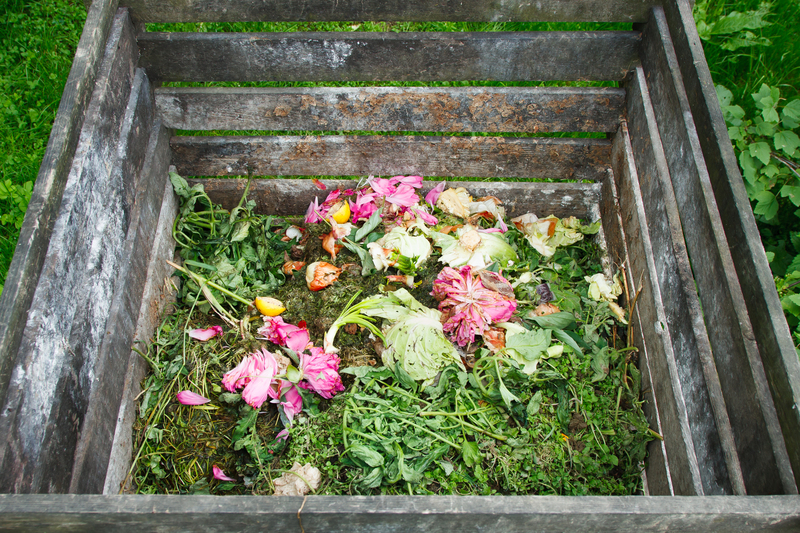Disposing of Single-Use PPE Responsibly and Effectively
Personal Protective Equipment (PPE) has become an essential line of defense, not just for healthcare professionals, but also for the public during global emergencies such as the COVID-19 pandemic. However, the widespread adoption of single-use PPE such as masks, gloves, gowns, and face shields poses a unique challenge: environmentally responsible disposal. Mishandling this waste can lead to health risks and severe environmental pollution. This article provides an in-depth guide to disposing of single-use PPE safely and effectively, ensuring public health protection and environmental sustainability.
Why Is Responsible Disposal of Single-Use PPE Important?
Every day, billions of pieces of disposable PPE are used across the world. If not managed correctly, these items can:
- Clog sewer systems and watercourses
- Threaten marine life and wildlife
- Pose a risk of infection and disease transmission
- Contribute to microplastic pollution
- Increase landfill burden
The Scale of the PPE Waste Problem
According to reports, during the COVID-19 pandemic global PPE usage skyrocketed, with over 129 billion face masks and 65 billion gloves used per month globally. Unfortunately, a significant portion of this single-use personal protective equipment ends up as litter or is incorrectly disposed of.

Identifying Single-Use PPE and Its Materials
Understanding what counts as disposable PPE is the first step in its effective disposal. Common single-use PPE includes:
- Disposable face masks (surgical masks, N95/FFP respirators)
- Surgical gloves (latex, nitrile, vinyl)
- Protective gowns and aprons
- Face shields and visors
- Shoe covers and hair nets
Guidelines for Safe and Responsible PPE Disposal
1. Do Not Recycle Single-Use PPE in Household Recycling
Disposable PPE should never be placed in your household recycling bin. Sorting machinery cannot properly process materials like masks or gloves, and they can cause equipment jams and pose a risk to waste workers.
2. Bagging and Binning PPE Properly
After use, place PPE in a plastic bag, tie it securely, and then put it in the general waste bin. This helps contain contaminants and ensures that waste handlers are not exposed to potential hazards.
3. Handling Potentially Contaminated PPE
If the PPE was used in a medical setting or was worn by someone infected with a contagious disease (like COVID-19), follow these steps for special disposal:
- Double bag the items, using two layers of strong, leak-proof bags.
- Seal bags tightly and label as "clinical waste" if such disposal is available.
- Store separately from other waste for up to 72 hours before collection (check local guidelines).
- Never attempt to clean and reuse single-use PPE.
4. Disposal of Used PPE in Public Places
When outside, always use designated PPE disposal bins if available. If not, carry a small bag with you to temporarily store used PPE and discard it safely at home. Never litter masks or gloves in public areas, sidewalks, parks, or on the street.
5. Special PPE Collection Points
Some areas offer dedicated single-use PPE collection bins in hospitals, offices, airports, and transportation hubs. Use these whenever possible, as they often ensure the collected PPE is processed in specialist waste facilities equipped to deal with potentially infectious waste.
Environmental Hazards of Improper PPE Disposal
Threats to Wildlife and the Ecosystem
- Entanglement and Ingestion: Animals, especially birds and marine life, can become caught in mask ear loops or ingest small plastics, risking injury or death.
- Microplastic Formation: Over time, plastic-based PPE breaks down into microplastics, entering food chains and impacting ecosystems.
- Pesticide and Chemical Spread: Residues on contaminated PPE can leach into soil and waterways.
- Visual Pollution: Accumulated PPE waste disfigures landscapes, beaches, and city streets.
Best Practices for Individuals
Educate on Proper Single-Use PPE Disposal
The first step to tackling the issue is raising awareness. Practice and promote the following:
- Demonstrate the correct way to bag and bin PPE for family and friends.
- Encourage the use of designated PPE disposal facilities and encourage others not to litter.
- Share disposal guidelines and tips on social media and among community groups.
- If possible, take part in, or organize, local PPE litter clean-ups.
Avoid Overuse and Unnecessary Waste
While safety is paramount, do not use disposable PPE when not needed. If you're not in a high-risk setting, consider using reusable PPE like washable cloth masks and follow proper hygiene protocols.
Never Flush PPE Down Toilets or Drains
Flushing face masks or gloves can cause severe blockages in wastewater systems and lead to environmental contamination. Always dispose of single-use PPE in general waste bins.
Institutional and Commercial Duties for PPE Waste Management
Setting Up PPE Disposal Stations
Workplaces, schools, retail settings, and public transport terminals should provide clearly marked PPE disposal bins at high-traffic locations. Bins should be:
- Touch-free/foot-operated where possible
- Fitted with secure lids to prevent windborne litter or unauthorized access
- Emptied and sanitized frequently
Staff Training and Protocols
Educate staff on:
- Safe removal and disposal of used PPE
- PPE replacement intervals
- Personal hygiene before and after handling PPE waste
Arranging for Specialist PPE Waste Collection
Businesses, especially healthcare facilities, need to contract licensed medical waste handlers. These professionals ensure:
- PPE is transported safely
- Waste is incinerated or treated according to stringent regulations
- Hazardous materials do not enter the general environment
Innovative Approaches to PPE Waste Reduction
Exploring PPE Recycling Initiatives
Though not widespread, some specialized programs have emerged:
- TerraCycle and similar firms offer PPE recycling for face masks and gloves. Collected PPE is sanitized and melted down into plastic pellets for reuse.
- Research into pyrolysis and chemical recycling holds promise for converting PPE plastics into fuel or raw materials.
Switching to Reusable PPE Where Safe
Whenever practical, organizations and individuals should evaluate the use of reusable PPE alternatives like cloth masks, washable gloves, or gowns.
- Ensure items are washed separately and thoroughly after each use.
- Follow local health guidelines for usage and decontamination.
Legal and Regulatory Considerations
Waste management laws for single-use personal protective equipment disposal vary from country to country. Key points include:
- PPE used in healthcare is often classified as clinical or infectious waste and must be disposed of via licensed medical waste contractors.
- Workplaces may be required by occupational health and safety agencies to follow specific disposal and record-keeping procedures.
- General public use is typically managed via municipal "general waste" streams unless otherwise stated in local guidelines.
Major Challenges in PPE Disposal
- Volume: The sheer number of used items strains waste management systems worldwide.
- Segregation: Mixing PPE waste with regular waste complicates disposal and increases risk.
- Lack of Awareness: Many people are unclear on disposal procedures, leading to improper discarding.
- Limited Infrastructure: Not all regions have access to specialized PPE disposal or recycling options.
Future Trends and Solutions for Sustainable PPE Waste Management
Biodegradable and Compostable PPE
Recent advances include biodegradable face masks and gloves made from plant-based fibers or bioplastics. These alternatives break down much more quickly than traditional plastic PPE. As adoption grows, improved framework for compostable PPE disposal will be necessary.
Public Education Campaigns
Governments and NGOs are ramping up efforts such as:
- Clear signage and instructions near waste bins
- Social media and information drives on correct single-use PPE disposal methods
- Encouraging reusable options where possible
Enhanced Waste Collection Logistics
- Mobile and pop-up collection facilities for large public events
- Integration of PPE bins on transportation, shopping malls, and parks
- Regular sanitation of public bin touchpoints
Summary
The massive increase in single-use PPE is a necessary response to health crises--but it comes with a heavy environmental cost if not managed responsibly. Dispose of single-use PPE safely and effectively by:
- Never recycling or flushing PPE
- Using secure bags and dedicated waste bins
- Following infection control procedures for contaminated items
- Reducing unnecessary use and considering reusable alternatives when appropriate
- Staying informed about new recycling and biodegradation technologies

Frequently Asked Questions: Disposing of Single-Use PPE Responsibly and Effectively
Can single-use PPE be recycled?
Currently, most household and municipal recycling programs do not accept single-use PPE due to contamination risk and material complexity. Specialized PPE recycling schemes are growing but are not yet widely available.
What should I do with used face masks and gloves at home?
Place them in a securely tied bag and dispose of them in your general waste bin. Do not place used PPE in recycling or compost bins.
Is it safe to use reusable PPE?
Yes, provided the item is cleaned thoroughly as per recommended guidelines. Reusable cloth masks, goggles, and gowns reduce waste but require diligent washing and disinfection practices.
How can I avoid contributing to PPE pollution?
Always dispose of PPE responsibly, encourage others to do the same, and opt for reusable options where possible. Avoid littering and support community initiatives tackling PPE waste.